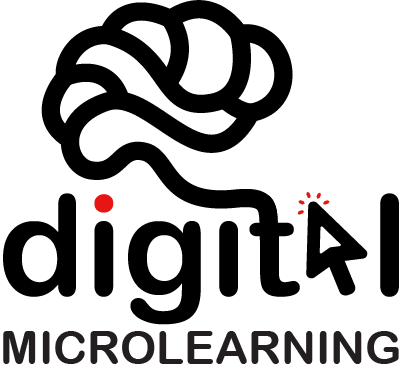# of Words: 556; Time to read: 2:44
Learning through microlearning is a relatively new approach that involves delivering small, bite-sized pieces of content to learners. These short modules typically focus on a specific topic or skill, making them highly targeted and efficient. The content can be presented as a micro course with short modules, videos under 5 minutes, infographics, text, images and quizzes.
One of the key reasons why microlearning is a good fit for organizations is its adaptability to the fast-paced nature of today's workplace. In a world where time is of the essence and attention spans are shrinking, microlearning provides a solution that fits seamlessly into employees' busy schedules. Instead of dedicating hours to training sessions, employees can engage with microlearning modules when and where they need it, maximizing productivity without sacrificing valuable time.
Microlearning isn’t necessarily a replacement for traditional learning. It’s often used to fill in learning gaps; but, can also be useful in supporting traditional learning, on the job training, mentoring and coaching initiatives. Unlike traditional long-form learning, microlearning offers learners the exact information they are looking for at the point in time of their need.
Furthermore, microlearning is highly effective for knowledge retention. By breaking down complex concepts into smaller, more digestible chunks, learners can better absorb and retain information. The on demand nature of microlearning, with information reduced to key concepts, reinforces learning and helps solidify new skills and knowledge.
Many microlearning courses include quizzes. The purpose of these quizzes is not to “grade” a person as traditional learning often does; but, rather to engage them, offer feedback, and help them lock in their learning.
Another benefit of e-learning or microlearning is its accessibility. With the rise of digital platforms and mobile devices, learners can access microlearning content anytime, anywhere, making it convenient for employees who may be working remotely or on-the-go. This accessibility ensures that learning opportunities are not limited by location or time constraints, empowering employees to engage with training materials at their own pace and convenience.

Moreover, microlearning promotes continuous learning and skill development within organizations. By offering a steady stream of relevant and up-to-date content, organizations can keep employees engaged and motivated to learn by contributing to their professional and career development. This continuous learning culture fosters innovation, adaptability, and growth, ultimately contributing to the overall success of the individuals and the organization. Workplaces offering learning, including el-earning opportunities are more attractive to a Gen Z and millennial workforce. According to a recent study by Robert Half Canada, “They also want managers who will drive their growth trajectory and tend to have higher expectations to learn and grow.”
Overall, microlearning is a convenient and effective method of learning that provides numerous benefits to organizations. The adaptability and accessibility of microlearning, as well as its cost-effectiveness and effectiveness in retaining knowledge, promoting continuous learning, and attracting talent make it a perfect tool to meet the dynamic workplace needs of today.

